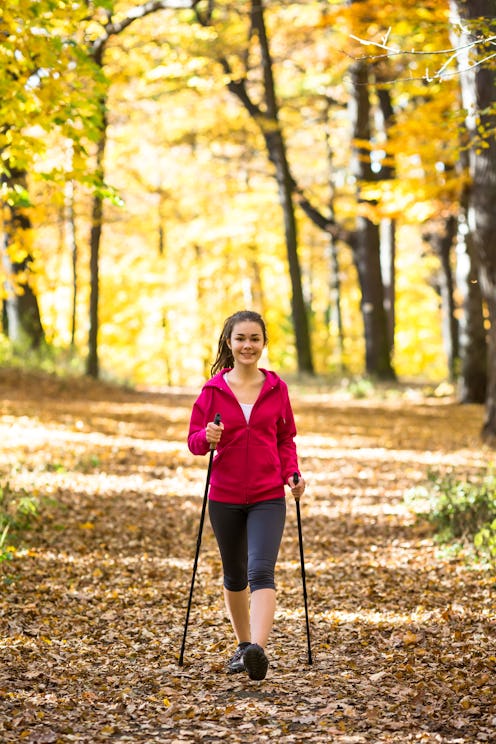Fitness
Nordic Walking Is A Genius Way To Get In All Your Steps
Get your walking sticks ready.

Shutterstock
Nordic walking got its start as an off-season training technique for cross-country skiers, says trainer Maddie Casadonte. It has since caught on among exercisers as a way to add extra intensity to a regular walk. Here are the benefits of Nordic walking, plus how to give it a try.
Shutterstock
It’s Great Cardio
The motion of Nordic walking turns your stroll into a cardio workout, Casadonte says. Not only do the poles allow you to traverse tough inclines and declines, but they allow you to walk farther and faster to bring on the sweat.
Shutterstock
It Strengthens Arms
Nordic walking also requires you to pump your arms and push off the ground as you go. This action initiates power from the shoulders, triceps, and biceps for a great arm workout, Casadonte says.
Getty Images/Yashoda
It Works The Legs
“Nordic walking makes walking a full-body workout just by adding some props,” Casadonte says. The poles work your arms as well as your core as you move. And since your legs have to keep up, they get a workout, too.
Shutterstock
It Improves Coordination
“Using the poles increases the challenge of coordination, while at the same time allowing more stabilization for balance,” Casadonte says. “This allows you to train your core and take that control with you when you're not utilizing the poles.”
martin-dm/E+/Getty Images
It’s Comfortable
Trainer Jake Dickson says Nordic walking is a good way to ease into exercise, especially if you have achy joints. The poles provide support and take excess pressure off your knees and hips.
Shutterstock
It Boosts Your Mood
If you’re looking for an excuse to get outside, Nordic walking might be the ticket. Spending time in the fresh air is good for your well-being, Casadonte says. The activity has also been shown to reduce anxiety and depression.
Shutterstock
It’s Fun & Social
Nordic walking is a super cute weekend activity that you can do solo or with friends, Casadonte says. Take your walking sticks to the woods for a hike, trek along the beach, trot around a city — or join a Nordic walking Meetup group.
Shutterstock
Keep Walking
You can place both poles down at the same time or alternate them for techniques called double and single poling. Pick whichever motion feels right to you. And as Casadonte says, “Just keep on walking!”